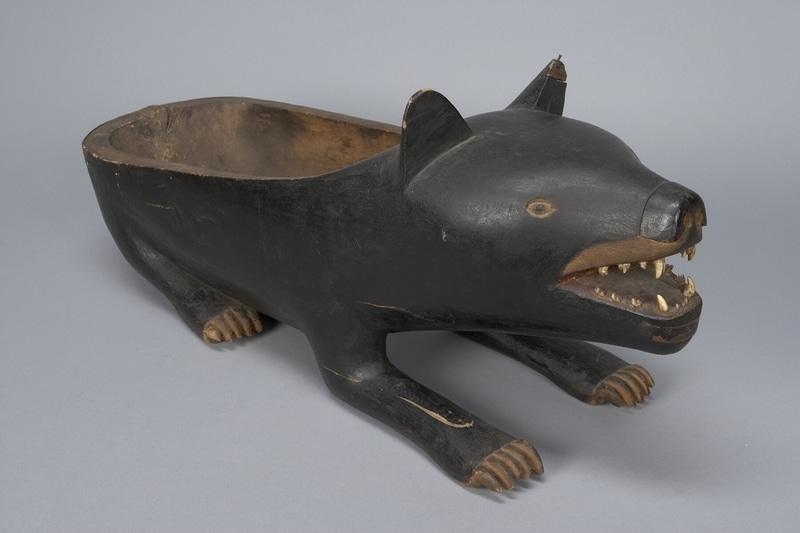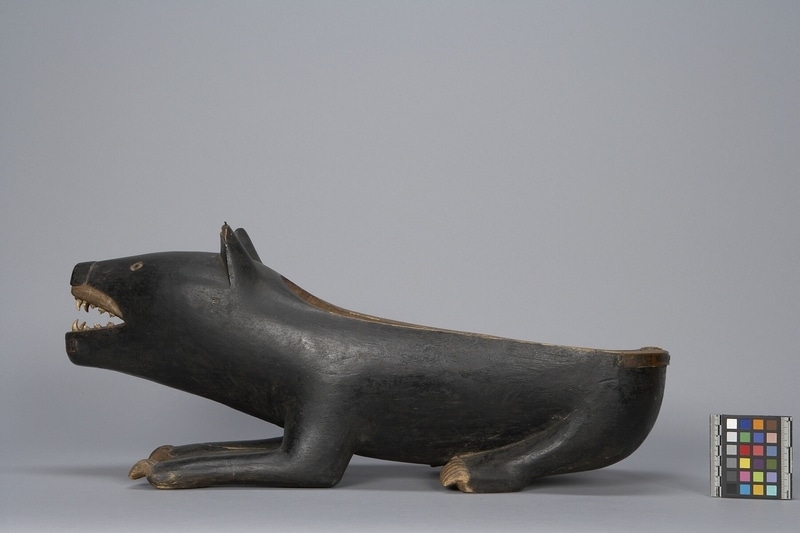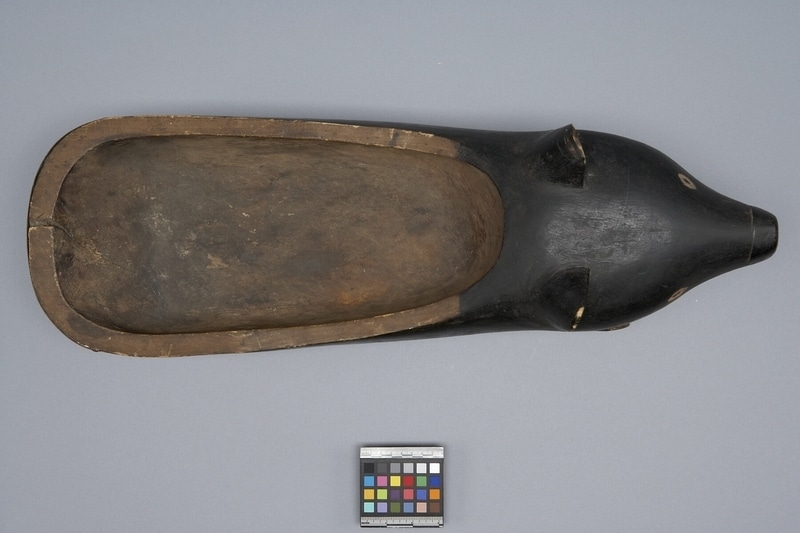Potlatch Dish Item Number: A8146 from the MOA: University of British Columbia



Description
Bear shaped feast dish, or bowl. Carved from a solid piece of wood; painted black on exterior, unpainted interior. The dish has an oval shaped concavity placed at the back of the bear. The five toes of each of the four feet are also unpainted. Inside of mouth is painted red and has been inset with yellowed seal teeth; ten maxillary and eleven mandiblary. A nail projects from top of right ear, where a previous repair was done. Copper-coloured metal bands have been nailed across the lower jaw, and along the rear of the bowl.
History Of Use
Dish to be used at potlatches. Anthropologist Homer G. Barnett has written that among Coast Salish people, food dishes with animal representations were only known among the ʔay ʔaǰuθəm-speaking Homalco, Klahoose, Island Kómox, and Tla’amin. He noted that the dishes of the Comox and Homalco people were sometimes carved or incised to resemble human or animal heads, but said this was not frequent.
Cultural Context
ceremonial; potlatches
Narrative
This bear-shaped feast bowl was made and used by Frank George of Church House, a remote Coast Salish (Homalco) community located at the south entrance to Bute Inlet, B.C. It was used for Frank George’s granddaughter Marion Harry’s (qoq̓ʷɛssukʷt) first tooth ceremony (nonhəm) in 1937. Marion’s mother was Josephine Wilson (nee George); her father was Johnson Wilson, from Church House. Anthropologist Homer G. Barnett recorded that Frank George’s father was born at Toba Inlet (Klahoose) but moved to Bute Inlet because his mother had come from there. Frank’s own mother was a Tla’amin woman. It was sold sometime in the 1950s or early 1960s, the bowl was purchased by MOA in 1962 as part of a larger collection.
Item History
- Made by Frank George (Maker) in British Columbia, Canada during 1900
- Collected in Church House, British Columbia, Canada between 1950 and 1962
- Owned by Frank George
- Owned by Edith Bevan Cross before July 30, 1962
- Received from Edith Bevan Cross (Seller) and H. R. MacMillan (Funding source) on July 30, 1962
What
Who
- Culture
- Coast Salish: Homalco
- Creator
- Frank George (Maker)
- Previous Owner
- Frank George and Edith Bevan Cross
- Received from
- Edith Bevan Cross (Seller) and H. R. MacMillan (Funding source)
Where
- Holding Institution
- MOA: University of British Columbia
- Made in
- British Columbia, Canada
- Collected in
- Church House, British Columbia, Canada
When
- Creation Date
- during 1900
- Collection Date
- between 1950 and 1962
- Ownership Date
- before July 30, 1962
- Acquisition Date
- on July 30, 1962
Other
- Condition
- fair
- Current Location
- Case 7
- Accession Number
- 0081/0004